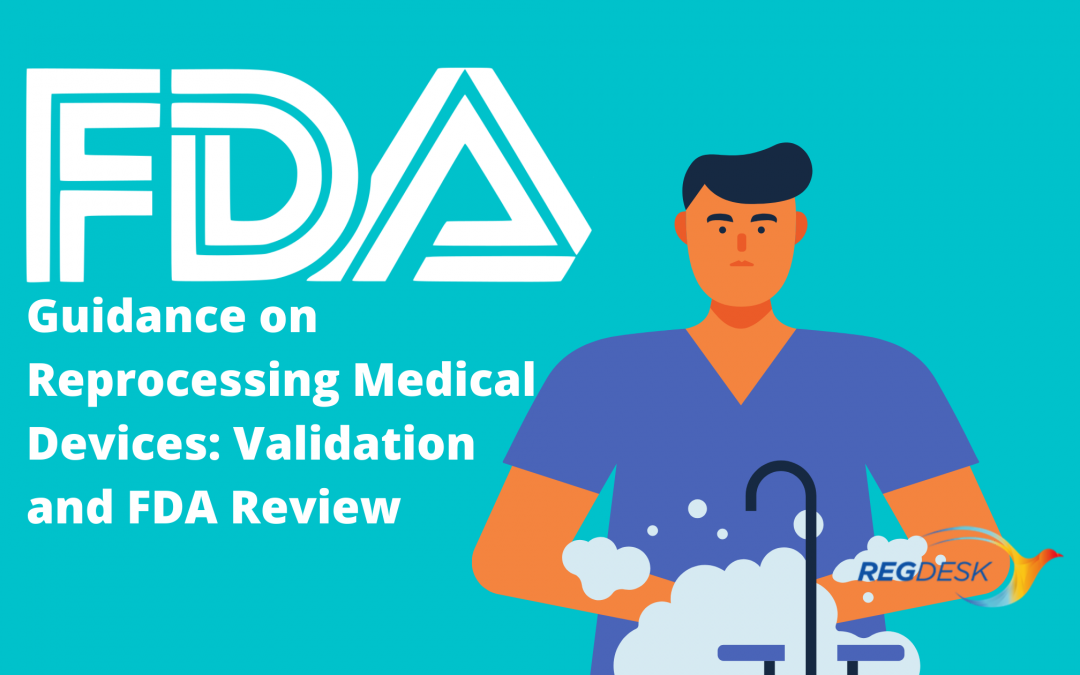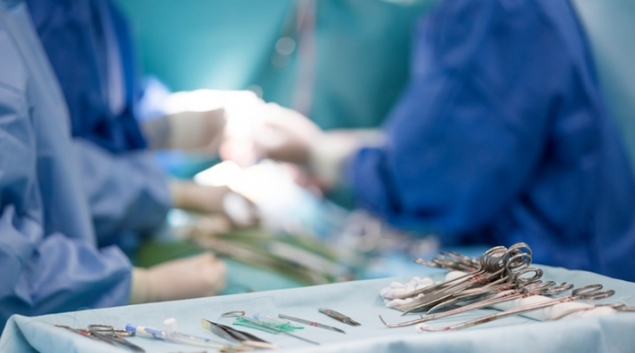The Food and Drug Administration (FDA or the Agency), the US regulating authority in the sphere of medical devices, has published a guidance document dedicated to reprocessing medical devices in healthcare institutions. The guidance is intended to assist the parties involved in operations with medical devices in ensuring compliance with the regulatory requirements related to reprocessing medical devices after use and before use for the same or another patient. This article focuses on the review of reprocessing instructions and documentation of reprocessing method validation in submission by the regulating authority. Due to its legal nature, the document does not introduce new rules and requirements, but provides additional clarifications on the way the provisions of existing legislation should be interpreted, and also additional recommendations to be considered. These requirements are non-binding, hence, an alternative approach could be applied, provided such an approach complies with the applicable regulatory requirements and has been agreed with the authority in advance.

Table of Contents
Validation of the Final Microbicidal Process
Among other aspects, the guidance outlines the main points related to the validation of the final microbicidal process to prepare the device for the next patient. In this regard, the Agency provides additional recommendations regarding disinfection and sterilization processes. In particular, the authority states these processes, as well as the instructions associated thereto, should be validated. In terms of sterilization, the FDA emphasizes the importance of ensuring compatibility of the medical device with the appropriate reprocessing equipment allowed for marketing and use in the US. Furthermore, the instruction describing the process should be feasible in the context of intended use in the appropriate use environment (clinical setting). Should sterility be required before use due to the nature of the device, the manufacturer shall also specify the sterility assurance level required. All the equipment used for validation should be approved by the FDA to ensure the accuracy and reliability of the data collected. However, in certain cases, it is allowed to use non-cleared equipment, provided it is at least as efficient as similar equipment approved by the FDA. Should the interested party decide to follow this approach, it would be necessary to provide additional information regarding differences between the cleared equipment and the one used for testing.
FDA Review of Reprocessing Instructions
Another important aspect addressed in the guidance relates to the review of reprocessing instructions and documentation of reprocessing method validation in submission by the regulating authority. As it was mentioned before, all cleaning, disinfection, and sterilization methods should be validated, and validations should be completed before submission of your pre-market submission. The instructions describing the reprocessing procedures should refer to the methods that have been already validated. The Agency mentions that it will review all reprocessing instructions provided in documentation accompanying medical devices and filed in the context of premarket submission. Should the authority identify, that the reprocessing instructions provided by the manufacturer do not provide adequate directions for use, the authority will notify the applicant accordingly. In such a case, the applicant will be allowed to submit an updated version of reprocessing instructions or justify the way the instructions are provided.
According to the guidance, the particular scope of documentation to be filed by the applicant about reprocessing reusable medical devices, its validation, as well as the appropriate instructions depends on the type of premarket submission and device type. In this regard, the authority provides the following:
- Documentation to be filed in the context of 510(k) submissions
- Review of Reprocessing Instructions. According to the guidance, when filing a 510(k) submission, the applicant should submit for review the labeling intended to be used with the device. The concept of labeling covers not only the labels intended to be placed on a medical device itself or its packaging but also any documentation accompanying a medical device including, inter alia, the reprocessing instructions (in case the device in question is reusable). It is also important to mention that such instructions should be duly validated before applying. Under the general rule, the Agency will compare the documentation submitted with the documentation related to a similar medical device already placed on the market. In this regard, the authority refers to the appropriate guidance document “The 510(k) Program: Evaluation Substantial Equivalence in Premarket Notifications [510(k)]”. In the course of such evaluation, the Agency will pay special attention to the differences in the labeling subject to review. At the same time, the authority acknowledges that the reprocessing instructions provided for the devices placed on the market some time ago could be out-of-the-date due to technological advancement, and this factor should be also considered when comparing the labeling. Should the Agency identify that certain improvement is needed to ensure the effectiveness of the reprocessing methods, it will notify the applicant accordingly. In particular, it is stated that if post-market experience indicates a potentially unsafe reprocessing method, FDA may suggest that proposed instructions utilizing such method for a device under review be changed to address the need for improvement reprocessing methods to avoid adverse events of the type reported and violations.
- Review of Validation of Reprocessing Instructions. The authority explicitly emphasizes that for certain medical devices the risks associated with microbial transmission are more important than for the others. According to the guidance, for such devices, the applicant should also provide protocols and complete test reports of the validation of the reprocessing instructions to be reviewed by the Agency. Thus, all instructions related to cleaning, disinfection, and sterilization should be subject to validation. As described by the FDA, the reprocessing validation data should demonstrate that the proposed reprocessing instructions will reprocess the subject device at least as well as the reprocessing instructions for the predicate device.
- Documentation related to PMAs, HDEs, and De Novo requests would contain both protocols and complete test reports.
- Documentation in IDEs should contain information about any testing performed. In particular, a summary of the validation testing of reprocessing instructions should be provided. It is important to mention that such validation should be completed before filing the initial application.
In summary, the present FDA guidance addresses the most important aspects associated with the validation of reprocessing instructions provided by the medical device manufacturer with a medical device. The document describes an approach to be applied when validating these instructions and also provides clarifications regarding the scope of documentation to be submitted.
Sources:
How Can RegDesk Help?
RegDesk is a next-generation web-based software for medical device and IVD companies. Our cutting-edge platform uses machine learning to provide regulatory intelligence, application preparation, submission, and approvals management globally. Our clients also have access to our network of over 4000 compliance experts worldwide to obtain verification on critical questions. Applications that normally take 6 months to prepare can now be prepared within 6 days using RegDesk Dash(TM). Global expansion has never been this simple.


